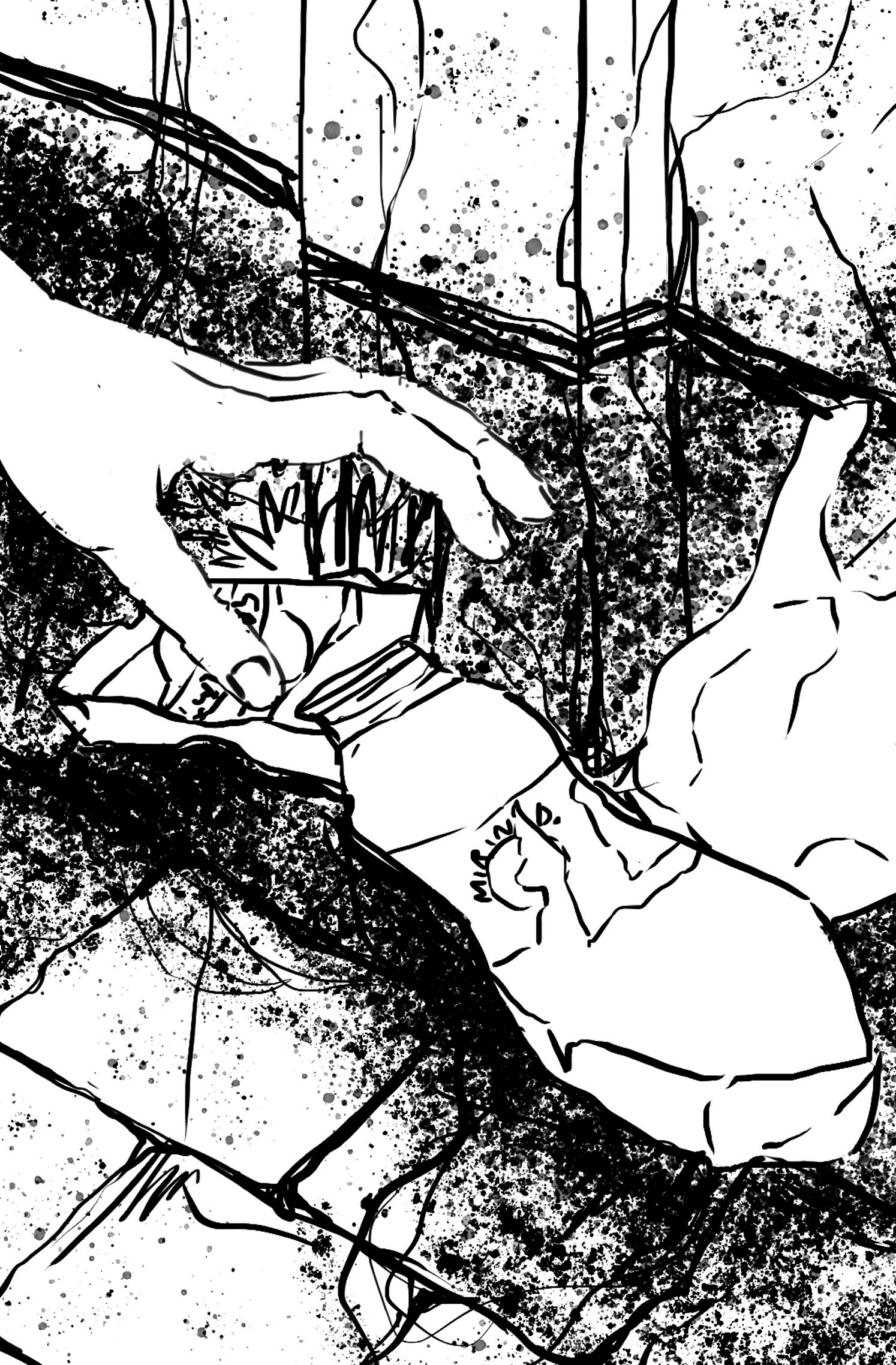Halima – Segregating Junk
The collection Awaaz: Voices of Govandi has emerged from the need of the people of Govandi to reclaim the narrative about their neighbourhood, and carve out their own future. Here is an excerpt from the collection.
Created as part of an artist residency program under the Govandi Arts Festival (2023)—a cultural movement that celebrates the spirit and resilience of the people of Govandi through performance and visual arts—Awaaz: Voices of Govandi (Yoda Press, 2024), has emerged from the need of the community to reclaim the narrative about their neighbourhood, and carve out their own future. The volume was edited by Nisha Nair-Gupta and features illustrations by Radhika Chaudhary and Ananya Wadhwana.
Awaaz is a collection of 10 stories, some are based on field visits, while some stories are contributions by the people from the community who volunteered to speak, from the Natwar Parekh Compound. The stories represent the trust of the people in sharing their lives to provide an intimate perspective of life at Govandi, a suburb in eastern Mumbai. Some names have been changed to protect privacy. This collection of stories has been produced in Hindi and English.
Here is an excerpt from the collection, “Halima – Segregating Junk”, published with permission from Yoda Press. The excerpt has been edited for publication on The Chakkar to fit our in-house requirements.
At first, Halima Shaikh seemed to be an intimidating, angry old lady. Dressed in white salwar-kameez with her hair tied up in a tight bun, she was in command, shouting orders to a bunch of people. All of them were scrap pickers, busily sorting through what they had collected. One group was dismantling everything from toddler cycles— segregating its various parts, plastic and metal being—to smaller objects like clothes iron. Another group was filling the segregated junk into gonis. The spread of the scrap and junk was huge and it covered almost 80 per cent of the lane between buildings 11 and 12, where they had set up their station.
So how long has she been in this business, we asked. Not interested in a lengthy conversation, Halima gave a single word reply. “Fifteen.” And where does she stay? She pointed to a building adjacent to the lane where their scrap is kept and she said, “Idhar rehti mai”. We asked her about the huge bags around her, filled to their maximum capacity with junk, and tried to further the conversation. She opened up to discuss her work and the scrap dealing, a prominent business in the area. She said that once all the jumbo sized gonis (bags) are filled with segregated scrap, they will be sent to the Mandala scrap market (near Mankhurd transit camp). This happened once a week. “Jab chhatayi hoti hai tab gaadiwala aata hai lene.”
Over the past few days, we had seen many people in the compound collecting various kinds of scrap, from plastic bottles to metal scrap and other junk from the houses. Were they all working under her? Some work with her. “Kuch mere under mai hai aur kuch dusro ke.” She added that not all working here stay in the colony. Also, there were shops and dealers here, like her, who purchase scrap from people across the city. Halima had four people working for her and she paid them daily wages.
Halima is the breadwinner in her family. “Ek chokra hai mera, woh bhi kaam pe jaata hai, paisa kamata hai.” However, she is the one who primarily handles the expenses of her house. Working in the same business for 15 years now, she was popular in the locality as well, and women often called her to collect the scrap from their house.
All through the conversation Halima had been multi-tasking, instructing her workers as well as sorting through the collected junk herself and talking to us. She responded continuously to the many customers passing by. “Aali taai, tumhara ghar ka bhi lene aati mai.”
Image courtesy: Yoda Press
Image courtesy: Yoda Press
Image courtesy: Yoda Press
***
Nisha Nair-Gupta is the founder and curator of The People Place Project. She is the Principal Architect at Design [Variable]. With varied work experience as an architect, journalist and an active participant in public art initiatives, she oscillates between her two interests of design and writing. You can find her on X: @nairnisha2306 and Instagram: @nisha_nairgupta.




